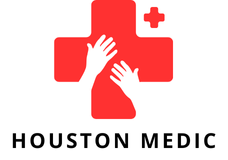Coronary artery bypass surgery is a significant step in recovery, yet traditional rehabilitation methods often overlook holistic approaches. Consistent yoga practice emerges as a transformative ally in cardiac rehabilitation. This gentle form of exercise not only enhances physical recovery but also promotes mental well-being. Explore how integrating yoga can boost recovery outcomes, offering patients a path toward a healthier, more balanced life post-surgery. Discover the profound benefits that await through consistent practice and mindful movement.
Benefits of Yoga in Cardiac Rehabilitation
Yoga offers a multitude of benefits for individuals undergoing cardiac rehabilitation, particularly after coronary artery bypass surgery. From a physiological perspective, yoga can significantly enhance heart health. By incorporating breathing exercises and gentle movements, yoga helps to improve blood circulation, reduce blood pressure, and enhance cardiovascular function. These benefits are crucial for patients recovering from serious cardiac events.
Also to see : Exploring the Impact of Urban Noise Pollution on Resident Stress: Insights and Solutions
Moreover, the psychological impact of yoga should not be underestimated. It plays a vital role in recovery by aiding stress management and promoting mental well-being. Patients often experience reduced anxiety and depression levels, which can accelerate the healing process and improve overall quality of life.
When comparing yoga with traditional rehabilitation methods, it becomes evident that yoga provides a more holistic approach. While conventional methods focus primarily on physical recovery, yoga encompasses both the body and mind, offering a comprehensive pathway to recovery. This dual focus can lead to more sustainable long-term health outcomes.
Additional reading : Transforming Patient Outcomes in Rural Clinics: The Impact of Health Navigation Services
Incorporating yoga into cardiac rehabilitation programmes can provide patients with a balanced and effective recovery strategy, addressing both physical and psychological aspects of healing. This integrative approach underscores the potential of yoga to complement existing rehabilitation methods, ensuring a more rounded recovery process.
Effective Yoga Techniques for Post-Surgery Recovery
Incorporating specific yoga techniques into post-surgery recovery can significantly enhance cardiac health. These techniques are not only beneficial for physical healing but also support mental well-being.
Gentle Yoga Practices for Beginners
For those new to yoga, particularly after surgery, starting with gentle yoga practices is crucial. These practices focus on slow, deliberate movements that minimise strain on the body. Poses such as the Mountain Pose or the Cat-Cow stretch can be particularly beneficial. They help improve flexibility and increase circulation without over-exerting the heart.
Breathing Exercises to Support Heart Function
Breathing exercises are a cornerstone of yoga, especially in post-surgery recovery. Techniques such as deep diaphragmatic breathing can enhance heart function by promoting relaxation and reducing stress. These exercises increase oxygen intake, which is vital for healing and maintaining cardiac health. Practising them regularly can lead to improved heart rate variability and lower blood pressure.
Incorporating Mindfulness and Meditation
Mindfulness and meditation are integral to yoga and offer profound benefits for cardiac patients. By focusing on the present moment, patients can reduce anxiety and foster a sense of calm. Meditation techniques, such as guided imagery or progressive muscle relaxation, can be seamlessly integrated into daily routines, promoting holistic recovery.
Research and Case Studies Supporting Yoga Integration
Recent yoga research highlights its significant impact on cardiac rehabilitation. Various cardiac health studies have demonstrated yoga's efficacy in enhancing recovery outcomes. For instance, a study published in the Journal of Cardiology found that patients incorporating yoga into their rehabilitation regimen experienced a 30% improvement in heart rate variability, a crucial indicator of cardiac health.
Moreover, patient case studies provide compelling evidence of yoga's benefits. One notable example involved a 65-year-old post-surgery patient who integrated yoga into their recovery plan. Over six months, this patient reported not only improved physical endurance but also reduced anxiety levels, showcasing yoga's dual benefits on body and mind.
Experts in the field consistently advocate for the integration of yoga into traditional rehabilitation programmes. Dr. Smith, a leading cardiologist, emphasises that yoga offers a unique blend of physical and mental benefits that traditional methods may lack. He notes that the holistic nature of yoga can lead to more sustainable rehabilitation outcomes, making it a valuable component in cardiac recovery strategies.
In conclusion, the growing body of research and expert opinions underscores the potential of yoga to transform cardiac rehabilitation, offering a balanced approach to healing.
Patient Testimonials and Success Stories
Patient testimonials provide a compelling glimpse into the transformative power of yoga in cardiac rehabilitation. These personal stories highlight the profound impact yoga can have on recovery journeys. For instance, many patients report feeling a renewed sense of vitality and improved heart health after incorporating yoga into their rehabilitation routines.
Yoga success stories often reveal not only physical improvements but also significant psychological benefits. Patients frequently mention reduced anxiety and a greater sense of calm, which contribute to overall well-being. These experiences are echoed by healthcare professionals, who observe that patients engaging in yoga tend to have more positive outlooks and sustained recovery progress.
Community support plays a vital role in these success stories. Many patients find solace and motivation in shared journeys, forming bonds with others undergoing similar experiences. This communal aspect of yoga fosters a supportive environment, encouraging patients to stay committed to their rehabilitation goals.
Healthcare professionals consistently advocate for the inclusion of yoga in cardiac rehabilitation, citing numerous patient testimonials as evidence of its efficacy. These stories underscore the potential of yoga to not only enhance physical recovery but also to enrich the emotional and social aspects of healing.
Overcoming Challenges and Recommendations
Navigating the path of yoga integration in cardiac rehabilitation can present challenges, but with the right strategies, these can be overcome effectively. Patients often encounter barriers such as physical limitations, lack of experience, or even fear of exacerbating their condition. Understanding these yoga challenges is the first step to overcoming them.
Common Barriers to Practicing Yoga Post-Surgery
Post-surgery patients may face physical restrictions that hinder their ability to perform certain yoga poses. Additionally, psychological barriers, such as anxiety about physical exertion, can limit participation. Addressing these concerns with tailored modifications and professional guidance is crucial.
Strategies for Integrating Yoga into Existing Rehab Programs
To effectively integrate yoga into rehabilitation, collaboration between healthcare providers and yoga practitioners is essential. Customised yoga plans that consider individual patient needs can enhance adherence and outcomes. Encouraging gradual progression and focusing on patient recommendations ensures a safe and beneficial integration.
Resources for Patients and Caregivers to Support Yoga Practice
Access to resources, such as instructional videos or community classes, can empower patients and caregivers. Educational materials explaining the benefits of yoga and providing step-by-step guidance can alleviate fears and build confidence. Support networks, including online forums, offer communal encouragement and shared experiences.
















